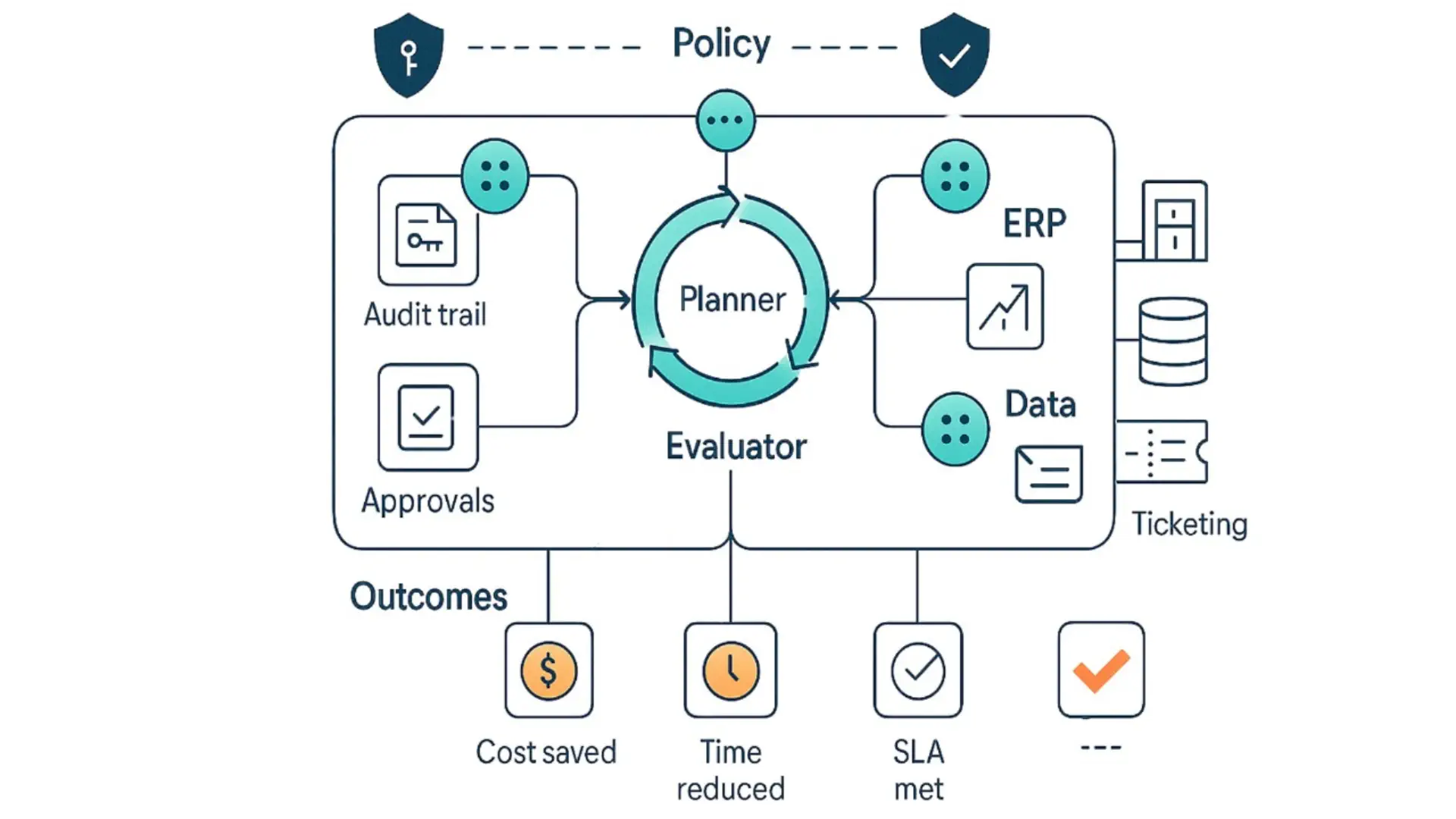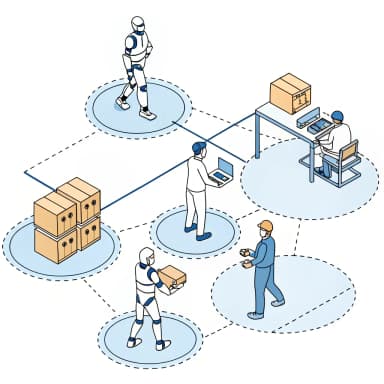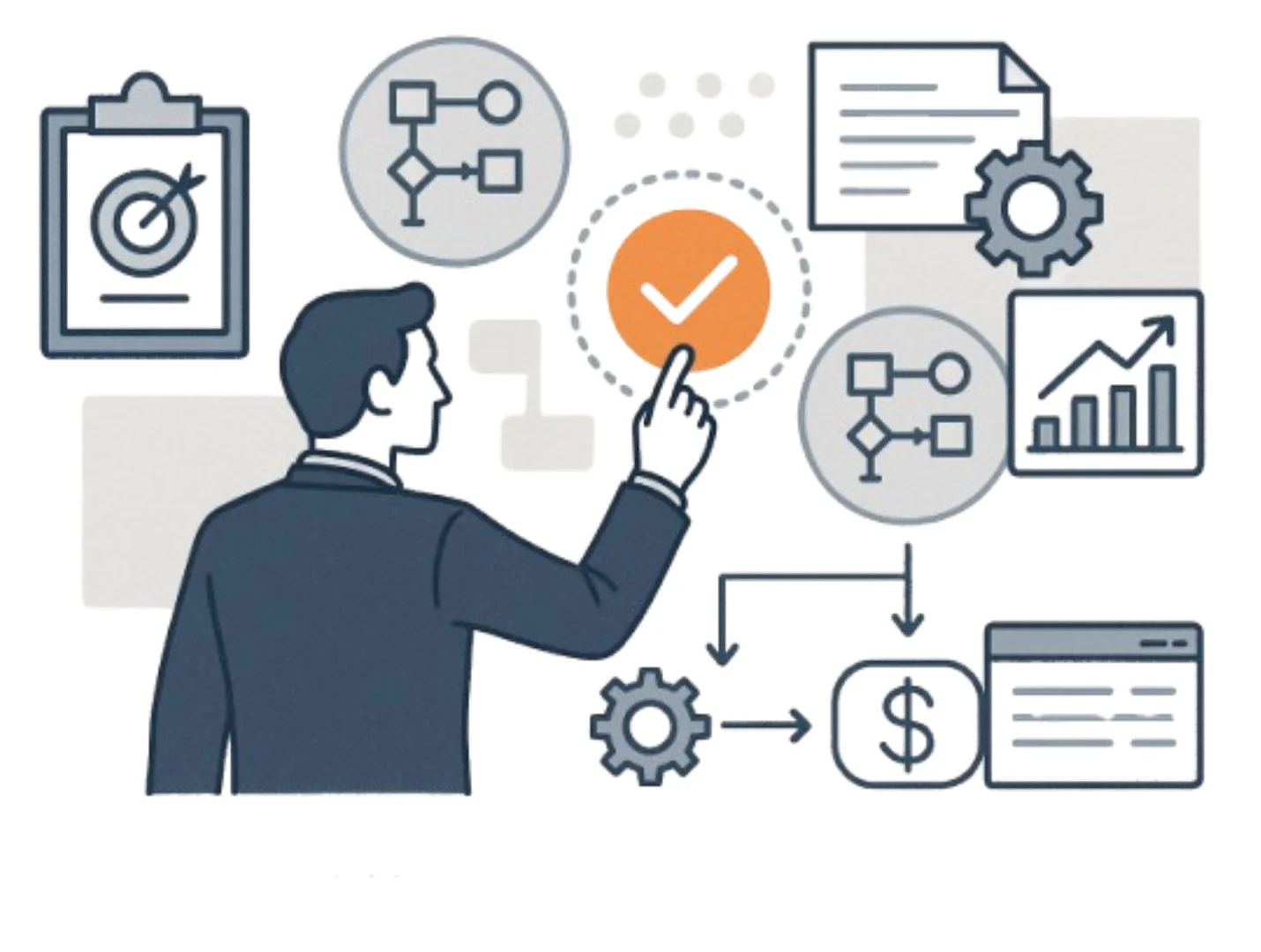Agentic AI for the Autonomous Enterprise
Move beyond chatbots and scripts. Deploy autonomous AI agents that can reason, act, and collaborate across your stack to drive real business outcomes—safely and at scale.
Move beyond chatbots and scripts. Deploy autonomous AI agents that can reason, act, and collaborate across your stack to drive real business outcomes—safely and at scale.

Agentic AI is emerging as the next strategic wave of enterprise automation—moving beyond chatbots and RPA to autonomous AI agents that can reason, call your systems, and run multi-step workflows. These AI agents don't just assist teams; they behave as agentic AI systems that manage and continuously optimize end-to-end business processes.

Autonomous AI agents coordinate work across systems and functions, reducing human touchpoints, delays, and operational friction.

AI agents interpret real-time operational data and context, recommending or executing the next best action to keep KPIs on track.

Autonomous AI agents provide 24/7 oversight on critical processes and SLAs, proactively flagging issues and triggering corrective actions.

Every decision and action taken by agentic AI is captured with full context, strengthening compliance, governance, and root-cause analysis.
Agentic AI orchestrates complex workflows across ERP, CRM, ITSM, data warehouses, and custom tools—without hard-coding every step. Agents manage branching logic, approvals, and exceptions while keeping humans in control for oversight and key decisions.
Instead of one overloaded bot, you deploy a team of specialized AI agents—planner, researcher, operator, reviewer, watchdog. Each focuses on a specific role, and together they deliver higher reliability, quality, and resilience in production.
Agents get governed access to the right data—transactions, documents, metrics—and use it to synthesize insights, test scenarios, and recommend or execute the next best action. Decisions are grounded in live context, not static rules or guesswork.
Always-on agents continuously track KPIs, SLAs, and event streams, detect anomalies early, and automatically open tickets, trigger playbooks, or escalate to humans. Operations shift from reactive firefighting to proactive, self-healing systems.
Agentic AI needs more than pattern-matching—it needs systems that can break goals into steps, reason over constraints, and replan when reality changes. Think symbolic reasoning + LLMs + planners working together so AI agents can actually own outcomes, not just answer questions.
Autonomous AI agents must safely call internal tools, APIs, and microservices—chaining them together into multi-step workflows. This requires a flexible tool-calling layer, typed inputs/outputs, error handling, retries, and guardrails so agents never "guess" when they should call a system of record.
Agentic AI is only as good as the data it can see. You need a unified data access layer with row/column-level permissions, masking, and full auditing so AI agents can securely read and write across CRMs, ERPs, data warehouses, and SaaS apps without breaking compliance.
AI agents must remember past interactions, decisions, and states. That means short-term task context, long-term memory of entities and preferences, and support for long-running workflows (hours/days) where agents can pause, resume, and coordinate with humans and other agents.
Real business processes rarely involve a single bot. You need infrastructure for orchestrating multiple AI agents with different roles (e.g., planner, executor, reviewer), plus human-in-the-loop steps, approvals, and escalation paths—all modeled as explicit workflows.
Autonomous AI agents require "AgentOps": logs, traces, metrics, and evaluation frameworks to see what the agents did, why, and whether it worked. This includes scenario testing, regression checks, A/B experiments, and dashboards to monitor performance, drift, and failures in production.
As agents gain autonomy, safety becomes non-negotiable. You need policy engines to enforce business rules, budgets, permissions, and constraints; content and action filters; and approval gates—so agentic AI stays within organizational and regulatory boundaries.
Agentic AI must plug cleanly into your existing stack. That means a platform that supports Kubernetes/cloud deployment, VPC networking, secrets management, role-based access control (RBAC), SSO, audit logs, and integration SDKs—so AI agents can operate as first-class citizens in the enterprise.
Agentic AI modernizes factories by closing the loop between design, planning, production, and after-sales service, so decisions move from static SOPs to adaptive, data-driven actions on the shop floor. By orchestrating people, machines, and MES/ERP systems, AI agents reduce downtime, cut scrap, and keep schedules realistic in the face of real-world variability. The result is higher OEE, tighter quality, and faster response to demand changes—without adding headcount.
You don't need to rebuild your tech stack to get value from agentic AI—start focused, then scale with confidence.
Outcome
Look for rules-heavy, repetitive work that spans multiple systems. Prioritize workflows with clear KPIs (time-to-complete, error rate, cost). Choose a process where stakeholders are eager for change.

Agentic AI is software that uses goal-driven ai agents to plan tasks, call tools and APIs, keep context, and verify results—so work gets done end-to-end, not just answered.
AI agents break a goal into steps, retrieve relevant data, execute actions via integrations, check results against rules, and loop until success or human review.
Chatbots reply; autonomous ai agents execute. Agents orchestrate multi-step workflows across systems with memory, tools, and verification.
RPA automates fixed, UI-based tasks. Agentic AI handles variable, cross-system work using APIs, reasoning, and policy checks—often complementing existing RPA.
Traditional tools require rigid flows. Agentic AI adapts at runtime, selecting tools, handling exceptions, and escalating with human-in-the-loop.
Customer operations, KYC/onboarding, claims/disputes, IT helpdesk, order exceptions, procurement/CLM, financial close, regulatory reporting, and field service.
Yes, within guardrails. High-risk steps can require approvals, while low-risk steps auto-complete with full audit trails.
Guardrails (policies, allow/deny lists), retrieval to ground responses, evaluation checks, test sandboxes, versioned flows, and audit trails on all actions.
ERP, CRM, ITSM, CLM, data warehouses, identity (SSO/RBAC), messaging, payments, and custom APIs via connectors or adapters.
Data stays in your tenant; encryption in transit/at rest, secrets management, scoped permissions, environment isolation, and role-based access with logging.
Yes—through data residency options, auditability, retention controls, and PHI-aware configurations where required. (Confirm specific attestations with your vendor.)
Track cycle time, right-first-time rate, touch time, cost per transaction, SLA adherence, deflection rate, and revenue impact (conversion/save). Start with a baseline.
Pilot use cases often deliver 20–50% cycle-time reduction and 30–70% handle-time reduction in 6–10 weeks, depending on integration depth and policy complexity.
Pick a high-volume workflow with clear rules, measurable KPIs, API access, and manageable risk (e.g., onboarding, ticket triage, order exceptions).
Not necessarily. Many teams layer agents on top of existing RPA/BPM, using agents for reasoning, decisions, and exceptions while RPA runs stable steps.
By using retrieval-augmented generation, deterministic tool calls, validations against schemas/policies, and human approvals for sensitive actions.
Yes. Enterprises commonly deploy in private VPCs with private connectors, customer-managed keys, and egress controls.
Solution architect, API/automation engineer, domain SME, and an operations owner. Optional: prompt/flow designer and data engineer.
Usually a platform subscription plus usage (agent runs/API calls). ROI models tie cost to reduced handle time, deflection, or revenue lift.
Manufacturing, oil & gas, automotive, textile, energy & utilities, BFSI, insurance, healthcare, retail/eCommerce, logistics, IT/Shared Services.
Use SSO/RBAC, approval steps, test/stage/prod environments, versioned flows, policy guardrails, and audits with full replay.
Single agents own a workflow end-to-end; multi-agent systems divide work among specialists (e.g., planner, executor, reviewer) for scale and reliability.
Via connectors for read/write, governed queries, lineage, and cached retrieval to power context, analytics, and closed-loop reporting.
Tell us about your challenge - we’re here to help.